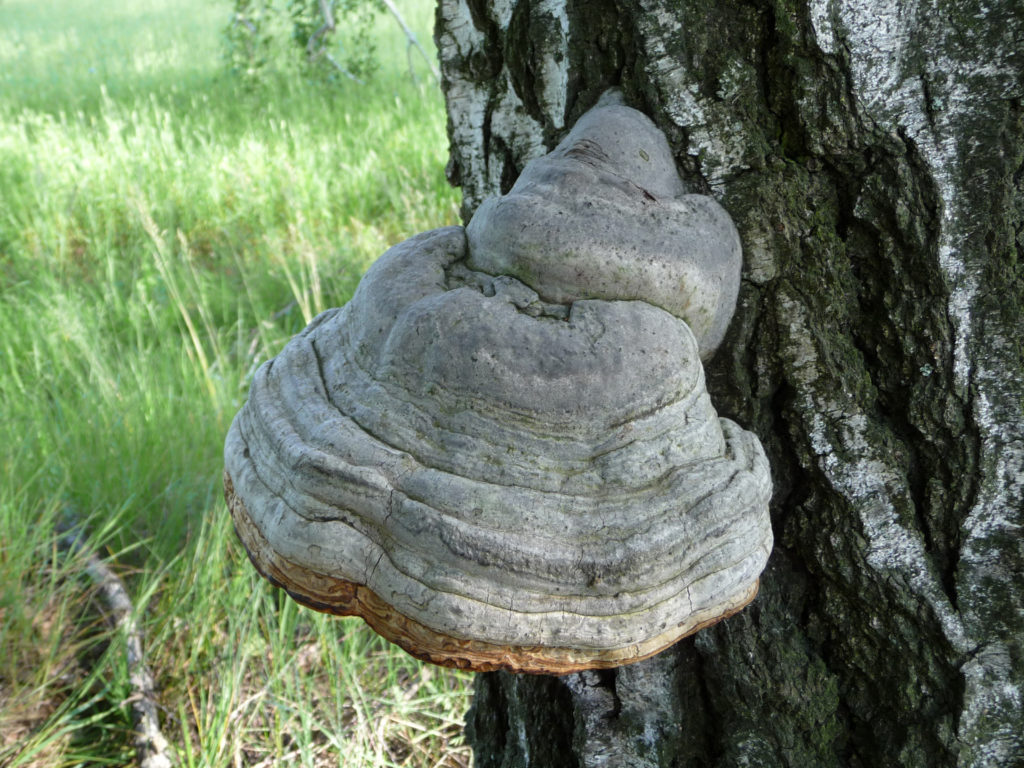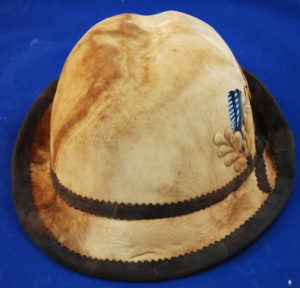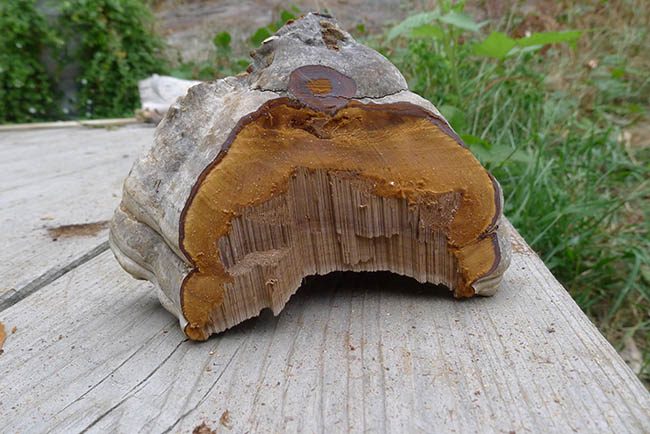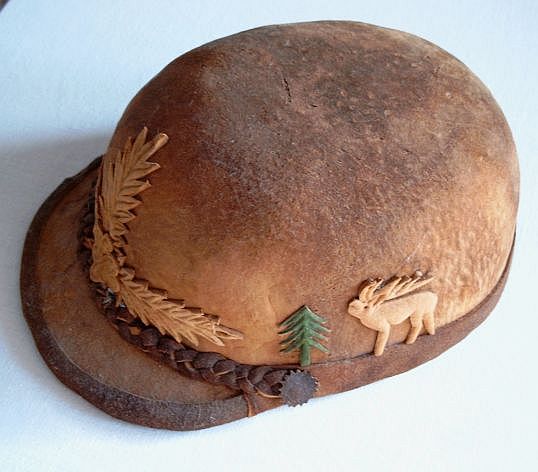Amadou is a spongy material derived from Fomes fomentarius fungi (Europe, Asia, Africa and North America), used by ancient people as fire tinder, and for forming a felt-like fabric for hats and other items. It has good water-absorbing abilities, once used as a medical dressing and by dentists to dry teeth, but still used in fly fishing for drying out flies.
Fomes fomentarius (commonly known as the tinder fungus, false tinder fungus, hoof fungus, tinder conk, tinder polypore or ice man fungus) grow on the bark of coniferous and angiosperm trees. They have the appearance of a horse’s hoof and vary in colour from a silvery grey to almost black, though they are normally brown.

Uses
- Ancient: fire tinder (used to catch sparks from flint struck against iron pyrites)
- Recent: Medial dressing / cleaning cloth
- Recent: Dental drying
- Recent: Razor strop (strip rubbed over the edge of a razor blade for final polishing)
- Recent: production of hats, bags and such like

- Current: fly fishing for drying out flies.
Potential Uses
- No known contemporary research, exploratory/student projects.
- We wonder if amadou or a derived material could be used as a leather / felt substitute in contemporary design. However the issue of it’s flammability needs to be considered!
Processes
- Remove from the tree
- Scrape off hard outer layer
For tinder:
- Cut thin strips of the inner spongy layer
- Dry
For ‘felt’ like material: (from this 2001 Telegraph article by John Beer)
- Chop in half: it mostly consists of tube gills running up from the base, with the amadou (a small quantity) sitting on top of these gills (known as the trama layer)

- Slice this amadou off the top of the fungus
- Soak for a week in a solution of washing soda, beating it gently from time to time (alternative processes suggest using urine, or boiling or soaking in a solution of nitre, potassium nitrate, or simply hardwood ash)
- Rinse and dry; it will go hard as it dries
- Beat out flat to produce a thin, soft sheet of amadou
More Information
- https://en.wikipedia.org/wiki/Amadou
- https://en.wikipedia.org/wiki/Fomes_fomentarius
- http://www.telegraph.co.uk/gardening/3294222/Reel-life-fomes-fomentarius.html
- http://www.primitiveways.com/Amadou%20substitutes.html

Please comment to help us improve this entry: